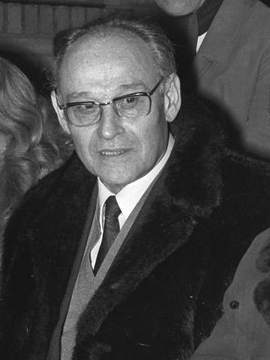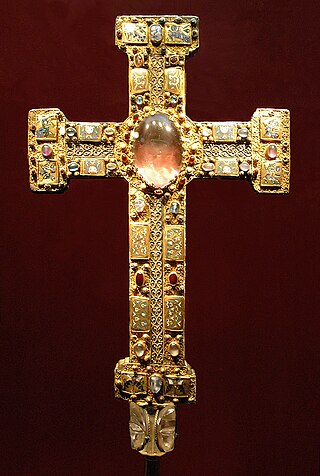
Essen is the central and, after Dortmund, second-largest city of the Ruhr, the largest urban area in Germany. Its population of 579,432 makes it the fourth-largest city of North Rhine-Westphalia after Cologne, Düsseldorf and Dortmund, as well as the ninth-largest city of Germany. Essen lies in the larger Rhine-Ruhr Metropolitan Region and is part of the cultural area of Rhineland. Because of its central location in the Ruhr, Essen is often regarded as the Ruhr's "secret capital". Two rivers flow through the city: in the north, the Emscher, the Ruhr area's central river, and in the south, the Ruhr River, which is dammed in Essen to form the Lake Baldeney (Baldeneysee) and Lake Kettwig reservoirs. The central and northern boroughs of Essen historically belong to the Low German (Westphalian) language area, and the south of the city to the Low Franconian (Bergish) area.

Rot-Weiss Essen is a German association football club based in Essen, North Rhine-Westphalia. The club currently plays in the 3. Liga, at the Stadion an der Hafenstraße.

The 2. Bundesliga(Zweite Bundesliga[ˈtsvaɪtə ˈbʊndəsˌliːɡa], lit. '2nd Federal League') is the second division of professional football in Germany. It was implemented 11 years after the founding of the Fußball-Bundesliga as the new second division for professional football. The 2. Bundesliga is ranked below the Bundesliga and above the 3. Liga in the German football league system. All of the 2. Bundesliga clubs take part in the DFB-Pokal, the annual German Cup competition. A total of 127 clubs have competed in the 2. Bundesliga since its foundation.

SC Charlottenburg is a German sports club based in the Charlottenburg district of Berlin and founded in 1902 as Charlottenburger Sport-Club 1902. In 1911, they merged with Sport-Club Westen 05 and changed their club colors from yellow and blue to black and white.

Carl Humann was a German engineer, architect and archaeologist. He discovered the Pergamon Altar.

Angelina Grün is a German former volleyball player, who was a member of the German Women's Team at the 2000 Summer Olympics in Sydney, Australia. Grün also competed at the 2004 Summer Olympics in Athens, Greece.
Manfred "Manni" Burgsmüller was a German professional footballer who played mainly as a striker; he also occasionally operated as a midfielder.
The 1990–91 2. Bundesliga season was the seventeenth season of the 2. Bundesliga, the second tier of the German football league system. It was the last season in which the league consisted of West German clubs only. From 1991–92 onwards clubs from the former East Germany joined the league.

Alexandru "Elek" Schwartz was a Romanian professional footballer and coach of the Netherlands national team. With S.L. Benfica he won the national Championship and Cup trophies of 1965 and led the club into the final of the European Champion Clubs' Cup.
The Regionalliga West/Südwest was the third tier of the German football league system in the states of Saarland, Rheinland-Pfalz and Nordrhein-Westfalen from 1994 to 2000.

The Regionalliga West is a German professional football division administered by the Western German Football Association based in Duisburg. It is one of the five German regional football associations. Being the single flight of the Western German state association, the Regionalliga is currently a level 4 division of the German football league system. It is one of five leagues at this level, together with the Regionalliga Bayern, Regionalliga Nordost, Regionalliga Nord and the Regionalliga Südwest.

SGS Essen are a German multi-sports club based in Essen, North Rhine-Westphalia. The club was founded in 2000 from the merger of VfB Borbeck and SC Grün-Weiß Schönebeck. It is most renowned for its women's football team, which plays in the top-tier Frauen-Bundesliga.
Günter Pröpper is a German retired professional footballer who played as a forward. Born in Dorsten, Pröpper started his career in amateur football before joining VfL Osnabrück in 1964. He spent three seasons with the club, moving on to Rot-Weiss Essen in 1967. Two years later he joined Wuppertaler SV, where he played for the remainder of his career.

The Cross of Mathilde is an Ottonian processional cross in the crux gemmata style which has been in Essen in Germany since it was made in the 11th century. It is named after Abbess Mathilde who is depicted as the donor on a cloisonné enamel plaque on the cross's stem. It was made between about 1000, when Mathilde was abbess, and 1058, when Abbess Theophanu died; both were princesses of the Ottonian dynasty. It may have been completed in stages, and the corpus, the body of the crucified Christ, may be a still later replacement. The cross, which is also called the "second cross of Mathilde", forms part of a group along with the Cross of Otto and Mathilde or "first cross of Mathilde" from late in the preceding century, a third cross, sometimes called the Senkschmelz Cross, and the Cross of Theophanu from her period as abbess. All were made for Essen Abbey, now Essen Cathedral, and are kept in Essen Cathedral Treasury, where this cross is inventory number 4.

The Cross of Theophanu is one of four Ottonian processional crosses in the Essen Cathedral Treasury and is among the most significant pieces of goldwork from that period. It was donated by Theophanu, Abbess of Essen, who reigned from 1039 to 1058.

The Essen Crown is an Ottonian golden crown in the Essen Cathedral Treasury. It was formerly claimed that it might have been the crown with which the three-year-old Otto III was crowned King of the Romans in 983, which is the source of its common name, the Childhood Crown of Otto III. However, this idea most probably derives from the wishful thinking of early twentieth century historians of Essen and it is now widely rejected. However it is certainly the oldest surviving lily crown in the world.

Georg Humann was a German art historian.

The 1954–55 Oberliga was the tenth season of the Oberliga, the first tier of the football league system in West Germany and the Saar Protectorate. The league operated in five regional divisions, Berlin, North, South, Southwest and West. The five league champions and the runners-up from the west, south, southwest and north then entered the 1955 German football championship which was won by Rot-Weiss Essen. It was Essen's sole national championship while, for losing finalist 1. FC Kaiserslautern, it was the fourth final it played in five seasons.
The Western German Cup was a cup competition organised by the Western German Football Association, which was played from the 1949–50 season up to the 1973–74 season. The best teams then qualified for the following season of the DFB-Pokal. In the years 1954 to 1960, only the Western German Cup winner participated in the DFB-Pokal. In the 1954–55 season, there was no competition.
Heinz-Dieter Hasebrink was a German professional footballer who played as a midfielder.













